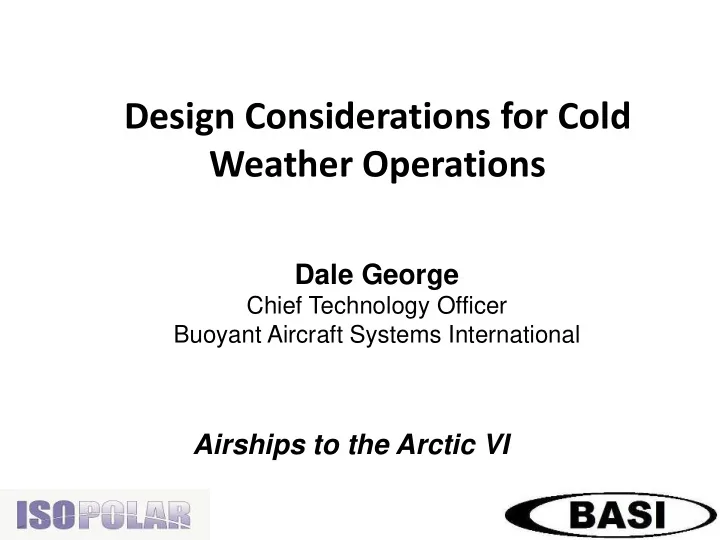

Design Considerations for Cold Weather Operations Dale George Chief Technology Officer Buoyant Aircraft Systems International Airships to the Arctic VI
Obvious Cold Weather Considerations • Snow and ice clearance/removal at operations site. • Pre-heat equipment for starting procedures. • Gondola heating. • Cockpit windows de-icing/de-misting. • De-icing/icing prevention for essential systems, e.g. Valves. • Heating/anti-freeze for fluid systems, and water ballast. • Prevention of ice build-up in flight. • Maintenance with heavy clothing and gloves.
Less Obvious Cold Weather Design Considerations • Materials and assemblies. (can they survive?) • Propulsion systems, piston, turbine, electric. (will they start?) • Ground handling operations, human factors. (will they work?) • Intelligent weather reporting, (will it be reliable?) • Infrastructure and environmental issues. (where are the hangars?)
Carbon New materials will be needed fibre and composite assemblies
Propulsion systems, piston engines
Aging fleet
Jet turbine systems .
Electric propulsion systems
Loading and un-loading
Bulky arctic dress
Weather conditions, icing and de-icing
Typical arctic weather stations
Infrastructure and environmental issues
New masting systems need to be designed
New hangars need to be designed
In Conclusion • Materials and assemblies will require extensive cold weather testing. • Propulsion systems must operate with low or no reliance on external heat sources. • Ground handling and human factors will require work to be done in heavy dress. • Infrastructure will require the use of existing fragile environmental concerns.
Thank you!
Recommend
More recommend